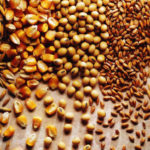Australian dollar rose to highs unseen in one month against its US rival on Monday, after a report showed Chinese new credit expanded to a record in January, which bolstered the outlook over worlds second largest economy, while China is Australias largest export market.
AUD/USD climbed to a daily high at 0.9069 at 1:30 GMT, also the pairs highest point since January 13th, after which consolidation followed at 0.9050, rising 0.17% for the day. Support was likely to be received at February 14th low, 0.8981, while resistance was to be encountered at January 13th high, 0.9086.
According to a statement by the People’s Bank of China, released on February 15th, aggregate financing, which is the widest indicator for lending activity, was at the amount of 2.58 trillion yuan (or 425 billion US dollars). New loans, denominated in local currency, reached 1.32 trillion yuan in January, or the highest level since 2010.
The report on lending “allays concern about a slowing in economic growth as China is still a credit-driven economy,” said Ray Attrill, the global co-head of currency strategy at National Australia Bank in Sydney, cited by Bloomberg News. “These numbers provide some confidence that growth is still ticking along, and are good for the Aussie, kiwi and emerging-market currencies.”
In Australia, new auto sales were reported to have fallen 3.5% in January compared to December, following a revised down gain in sales by 1.4% in December compared to November. In annual terms, new auto sales declined 3.0% in January. This indicator provides clues over consumer confidence in the country. In case demand for expensive durable goods increases, this signals that consumers feel more confident about their financial prospects in the future, thus, they may be willing to spend larger amounts of money.
The yield on Australian benchmark 10-year bonds rose to 4.16% on Monday, after on February 14th the yield was 4.11%.
Meanwhile, official data released on Friday showed, that the index of industrial production, which gauges output in manufacturing, utilities and mining sectors in the United States, decreased 0.3% in January compared to December, marking its first monthly drop since July 2013. Experts had anticipated that industrial production will expand 0.2% in January, after it increased 0.3% in December.
A separate survey, conducted by Thomson Reuters and the University of Michigan, showed that US consumers retained their optimism regarding nation’s economic development in the middle of February. The preliminary reading of the corresponding index of consumer confidence came in at 81.2, which confirmed the final value reported in late January. The median estimate of experts pointed that the index will probably slow down to a reading of 80.5 this month. This data suggested that consumers might be able to increase their spending, after severe winter in January adversely influenced their expenditures.
Elsewhere, the Aussie was slightly lower against the euro, with EUR/AUD cross up 0.09% to trade at 1.5176 at 8:00 GMT. AUD/NZD was gaining 0.11% on a daily basis to trade at 1.0805 at 8:00 GMT. The pair earlier touched a daily high at 1.0833, after a report by Statistics New Zealand made it clear, that retail sales in New Zealand climbed at a lesser pace than expected during the fourth quarter of 2013. Retail sales, without taking into account the rate of inflation, rose 1.2% in Q4 compared to Q3, while experts had projected an increase by 1.7%.





